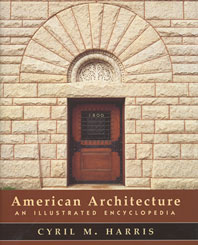Architect Tatiana Bilbao will be the first to tell you her projects don't address the urban problems of her native Mexico City. With a population of nearly 20 million, the interrelated issues of housing, transportation, and, perhaps most important, water infrastructure pose significant challenges. "Our generation is getting a lot of opportunity to build large-scale projects with people who are interested in architecture," Bilbao says, "but we are not working with the government on anything."
Bilbao studied the urban realm early in her career when she conducted research for Mexico City's Urban Housing and Development Department. "In Mexico, the production of space is mostly by the people; there is no planning at all," Bilbao says. By 1999, she had grown frustrated with her inability to accomplish anything but research and struck out to form an architecture firm, LCM, with a friend returning from practicing in the Netherlands. Then, in 2004, she formed her own practice, Tatiana Bilbao/mx.a, and with three other architects, set up a separate collaborative urban research studio to continue her interests in urbanism.
Her most widely published project'an exhibition pavilion completed in 2007 for the Jinhua Architecture Park in China'reflects Bilbao's main interests. She has embedded the pavilion into the landscape, designing a circuitous route through its multilevel spaces and strategically blocking and uncovering views along the way to its interior gallery. "I could understand a lot of things from going into a Chinese garden," Bilbao says. "What I loved is the way you discover it, where you can't understand the whole of it without going through the entire project."
The Jinhua project's attributes'its topographical plan and triangulated spatial organization, raw concrete and stone finishes, and its embrace of the architectural promenade'appear in Bilbao's recent designs, most of which operate on larger scales. A master plan for a botanical garden in Culiacan Sinaloa, Mexico, applies her circulation theories to a sprawling site, while a mixed-use residential, commercial, and arts center in an old factory in Guadalajara reimagines industrial production in cultural terms. Elevating the public's appreciation of the natural and built environment is one of the architect's chief concerns.
Bilbao accepts that her project portfolio is varied, and she quietly complains that she can't retest her theories on building types because each new commission is so different. Currently, she's at work on the Mexican government's pavilion for a 2008 expo in Spain that will focus on water conservation. But she's also designing a funeral parlor. One of her earliest projects, a beach house for the artist Gabriel Orozco's family, still makes her laugh. The house, which has a round pool on the roof, was organized around the conceit of camping. Like a tent, you must exit each room to the exterior in order to get to another room, such as the toilet or kitchen. "For Gabriel, it was not architecture; it's more of a living sculpture," Bilbao says, noting that she collaborated with Orozco on realizing the artist's initial design. "Architecture has to be functional. After it was built, and I understood how it worked like a tent, I thought it was really clever."










Post a comment to this article
Report Abusive Comment